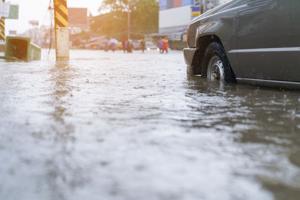Climate change not a huge contributor to Washington flooding, UW scientist contends

(The Center Square) – A University of Washington (UW) climate scientist doesn’t think climate change is playing a huge role in the heavy rains and recent flooding in Washington state, particularly in Whatcom County.
“The truth of the matter is climate change, if it keeps going, will increase these atmospheric rivers,” Cliff Mass, a professor at the UW’s Department of Atmospheric Sciences, told The Center Square Monday.
Atmospheric rivers is the latest term for the currents of warm, moist air from the tropics and subtropics that bring sustained, heavy precipitation to the area. Current trends could see these currents being 10% to 20% stronger by the end of the century, Mass said.
But for now, blaming climate change — the long-term alteration of temperature and typical weather pattern in a place — for the recent deluge doesn’t add up for Mass.
“It’s part of our meteorology,” he said.
The November 21 edition of his “Cliff Mass Weather Blog” focused on the flooding in and around the city of Sumas in Whatcom County in taking issue with the notion that climate change is to blame for recent record rainfall.
“Within hours of this heavy rainfall event, politicians and the media were suggesting that this event was somehow unique and the result of global warming,” Mass wrote.
He went on to note the Sumas region is prone to flooding and has flooded several times in the past century, a point backed up by a link to a Whatcom County analysis of area flooding events.
“You build a town in a historical river delta in one of the wettest portions of North America, you can expect trouble,” he wrote, explaining the lack of a progressive increase in heavy rain indicates climate change is not the culprit.
“At this point, the impact is rather minor,” Mass said of climate change as a causal factor in the recent heavy rains and flooding conditions. “It’s nothing huge.”
Still, that doesn’t diminish the impact the recent torrential downpour has had on the people and businesses impacted by the flooding.
“It’s part of the meteorology here,” Mass reiterated, noting a bigger area population – including more people living by rivers – means more people affected by heavy rainfall and the flooding that can bring.
On Nov. 15, Gov. Jay Inslee issued a severe weather emergency proclamation for several counties in the state impacted by flooding from relentless rainfall, including Clallam, Grays Harbor, Island, Jefferson, Lewis, King, Kitsap, Pierce, Mason, San Juan, Skagit, Snohomish, Thurston, and Whatcom counties.
The National Weather Service (NWS) confirmed in a Monday tweet that Seattle-Tacoma International Airport recorded 18.91 inches of rain between September and November, making it the wettest such time period since that information started being recorded in 1945.
Western Washington’s wetter-than-normal fall is in sharp contrast to the record-breaking heat the Pacific Northwest endured earlier this year when temperatures spiked in excess of 110 degrees Fahrenheit.
A similar pattern of blaming climate change played out then, too, which Mass also rejected.
Climate change, he said, only accounted for a few degrees of the heat that broke all-time records by large margins throughout the region this past summer.
“We still would have had the record heat, without global warming,” Mass said.
On Tuesday, another atmospheric river is expected to bring more heavy rains to the region, where many rivers are still in flood stages.
Disclaimer: This content is distributed by The Center Square
